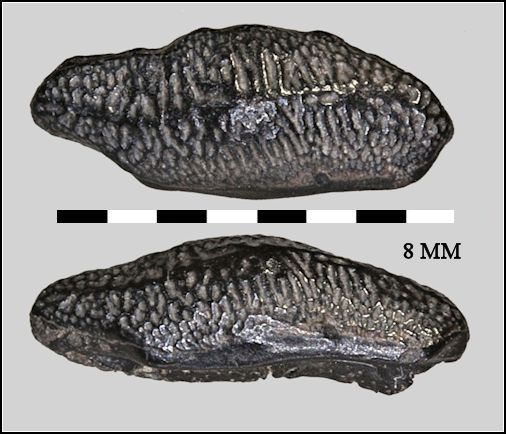|
Bullhead Shark Age - Jurassic - Recent - Commonality Uncommon - scarce
The anterior and lateral teeth of Heterodontus look completely different. The anterior teeth have a grasping design while the laterals function is that of grinding. Heterodontus teeth are found in both the Cretaceous and Tertiary locations in New Jersey but are on the scarce side. This may be due in part to their small size, anterior teeth are significantly smaller than the laterals, averaging about 2 mm. The elongated grinding laterals Iíve collected are 5+ mm in length. With a large number of species attributed to this genus and a limited number of New Jersey specimens available Iíve combined the Cretaceous and Tertiary material together as a genus page.
Lateral Heterodontus sp.
References
|



